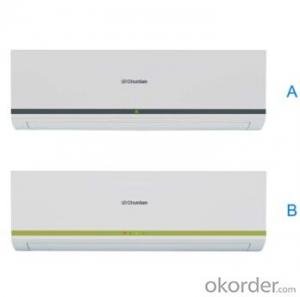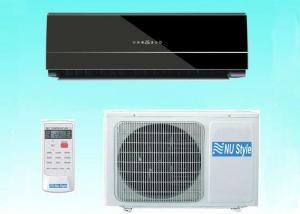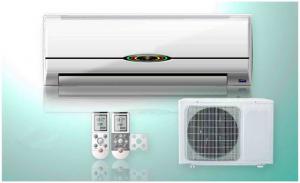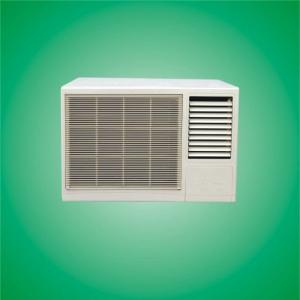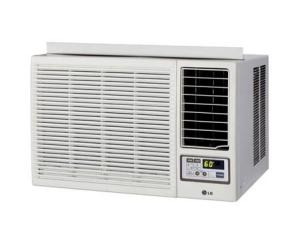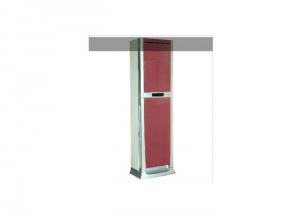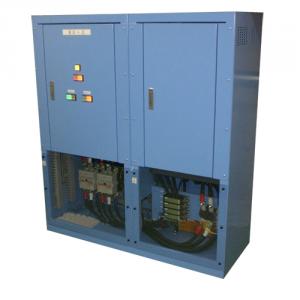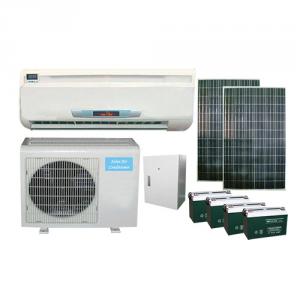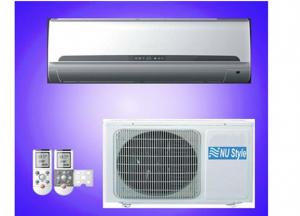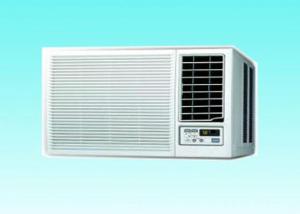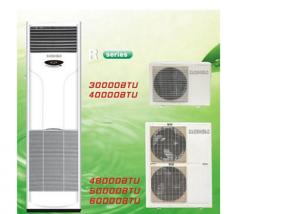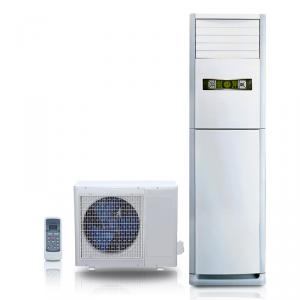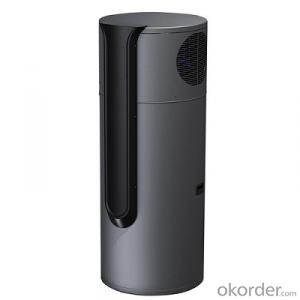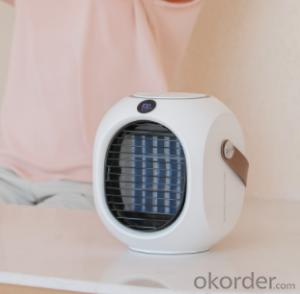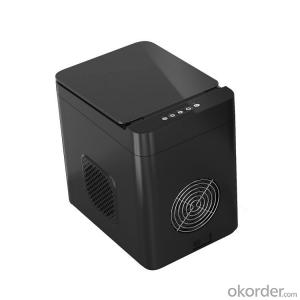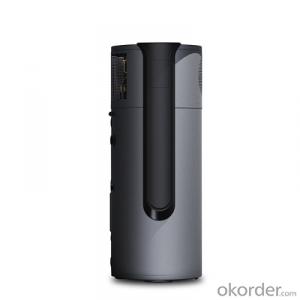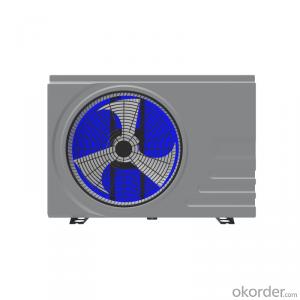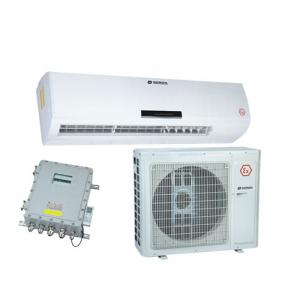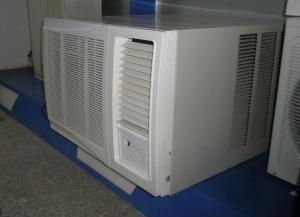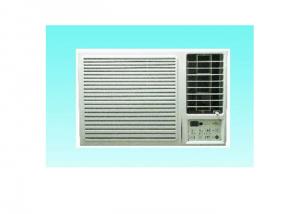new R290 split air conditioner with MEPS certificate Class A++
- Loading Port:
- Shanghai
- Payment Terms:
- TT OR LC
- Min Order Qty:
- 1 unit
- Supply Capability:
- 30 unit/month
OKorder Service Pledge
OKorder Financial Service
You Might Also Like
Quick Details
| Condition: | New | Brand Name: | CNBM | Place of Origin: | Jiangsu China (Mainland) |
| Use: | Room | Power Source: | Electrical | Power Type: | AC |
| Type: | Split Wall Mounted Air Conditioners | Cooling/Heating: | Cooling/Heating | Certification: | CB,CE,EMC,RoHS,MEPS, SAA |
| Capacity (btu): | 12000 | COP: | 3.8 | EER: | 3.7 |
| Power (W): | 945 | Voltage (V): | 220 | Model Number: | CS-12HA/AZ3-0 |
| Pipe Size: | 1/4" + 1/2" | Outdoor Size: | 760x259x537 | Indoor Size: | 820x190x274 |
| Condenser: | Pure Copper | Connecting Pipe: | Pure Copper | Cable: | 3m |
| Compressor type: | Rotary | Loading Quantity: | 255sets (40HQ) | Application Area: | 16-25m3 |
Packaging & Delivery
| Packaging Detail: | Carton Box Packing |
| Delivery Detail: | 35 days after receiving down payment |
Specifications
Wall mounted air conditioner :
1, R290, EER>3.66, with MEPS
2, 12000BTU ;
3, Cooling only/Cooling& Heating ;
4, 220V 50H
New developed R290 gas Wall Split Air Conditioner
1) Reliable quality---professional assembling and sufficient test, defective rate below 0.05%.
2) High quality compressors and parts with guarantee;.
3) Delivery: Within 45days after confirming the L/C or T/T swift copy.
4) Certificate--- CE, RHOS,MEPS, SAA, C-TICK, EMC, BV, SGS, ISO9001,SAA,CB, etc..
5) Compressor Brand: CHUNLAN, TOSHIBA, RCHI
6) 1% free parts of the total FOB amount.
7)OEM service.
- Q:How do I install a smart thermostat for my air conditioner?
- The process of installing a smart thermostat for your air conditioner is fairly straightforward. Here is a step-by-step guide on how to do it: 1. Ensure compatibility: Before buying a smart thermostat, check if it is compatible with your air conditioner system. Refer to the manufacturer's specifications and requirements to ensure a proper fit. 2. Power off: Begin by turning off the power to your air conditioner system. This can usually be accomplished by switching off the circuit breaker that controls the AC unit. 3. Remove the old thermostat: Take off the cover of your current thermostat to expose the wires connected to it. Take a picture or note down the wire connections for future reference. Carefully disconnect the wires, ensuring they don't fall back into the wall. 4. Mounting plate installation: Attach the mounting plate provided with your smart thermostat to the wall, using the screws provided. Make sure it is level and securely fastened. 5. Wire connection: Connect the wires from your air conditioner system to the corresponding terminals on the smart thermostat. Follow the manufacturer's labeling for proper connections. Use a screwdriver to secure the wires in place. 6. Install the smart thermostat: Carefully slide the smart thermostat onto the mounting plate, ensuring a firm attachment. Some models may require twisting or snapping into place. 7. Power on: Once the smart thermostat is securely installed, you can turn the power back on by switching on the circuit breaker. 8. Set up the smart thermostat: Follow the manufacturer's instructions to set up your smart thermostat. This will typically involve connecting it to your home's Wi-Fi network and configuring settings using a smartphone app or the thermostat's interface. 9. Personalize settings: Take some time to customize the settings on your smart thermostat according to your preferences. This may include setting temperature schedules, creating zones, or activating energy-saving features. 10. Test and monitor: Finally, test your smart thermostat by adjusting the temperature and ensuring that your air conditioner responds accordingly. Monitor its performance and make any necessary adjustments to optimize comfort and energy efficiency. Remember to consult the manufacturer's installation guide for specific instructions tailored to your smart thermostat model. If you feel unsure about any step of the installation process, it is advisable to seek professional assistance to ensure a safe and proper installation.
- Q:Should I close the doors in my home when using the air conditioner?
- Yes, it is recommended to close the doors in your home when using the air conditioner. Closing the doors helps to contain the cool air within the room or area where the air conditioner is being used. By keeping the doors closed, you prevent the cool air from escaping and the warm air from entering the room, which allows the air conditioner to work more efficiently and effectively. This not only helps to maintain a comfortable temperature in the room but also helps to save energy and reduce your electricity bills. Additionally, closing the doors also helps to reduce the noise from outside, providing a quieter and more peaceful environment.
- Q:Household air conditioning classification
- According to the feature classification ChanLengXing: suitable for summer is hot and winter is warm, or winter heating enough area. KFR: suitable for summer hot and winter cold area, and should pay attention to choose the heating is greater than the capacity of air conditioning to ensure heating effect. Air conditioning can be divided by function classification, ChanLengXing, KFR and electric auxiliary heating type 3 kinds. ChanLengXing air conditioning refrigeration effect is outstanding, more suitable for use in summer; And KFR air conditioning refrigeration heating dual function, can cool summer cooling, can also be heating in winter to keep warm. Therefore, fall and winter warm air conditioning, will choose KFR air conditioning.
- Q:Where does air conditioning come from?
- Air conditioning with indoor cycle machine, only cooling pipe and drain to the outside Close doors and Windows is used long can lead to poor air quality, So the air conditioning to rational use, open the window a seam, or over time indoor ventilation
- Q:What is the average cost of installing an air conditioner?
- The cost of installing an air conditioner can differ based on various factors. These factors comprise the unit's size and type, the installation process's complexity, the property's location and condition, and any additional materials or services needed. On average, installing a central air conditioning system can cost anywhere between $2,500 and $7,500. This encompasses the unit's purchase and installation, as well as any required modifications to the existing ductwork or electrical systems. For a window or wall-mounted air conditioner, the typical installation cost ranges from $150 to $500. This typically covers the unit's mounting and connection to a power source. Nevertheless, it is essential to recognize that these are just general estimates, and the actual cost can vary significantly depending on individual circumstances. Obtaining multiple quotes from reputable HVAC contractors is recommended to obtain a more accurate estimate tailored to your specific needs.
- Q:Can air conditioners be used in areas with high humidity?
- Yes, air conditioners can be used in areas with high humidity. In fact, one of the primary functions of an air conditioner is to remove moisture from the air, which helps to reduce humidity levels. The cooling process of an air conditioner involves removing heat and moisture from the indoor air, and then circulating the cooled and dehumidified air back into the room. This can greatly improve comfort levels in areas with high humidity, as it helps to make the air feel cooler and drier. Additionally, some air conditioners come with a dehumidification mode, specifically designed to remove excess moisture from the air. However, it is important to note that air conditioners are not as effective in extremely humid conditions, and in such cases, additional dehumidifiers may be required to achieve optimal comfort.
- Q:Household air conditioning not refrigeration is how to return a responsibility?
- Will tell from what you said should be a machine outside the heat dissipation is not enough, cause compressor protection, because of the high temperature at noon, so noon when he jumped, dirty don't dirty outside the machine you can see, you change the fan capacity, should be decreased capacity.
- Q:Can an air conditioner help reduce the risk of allergies?
- Yes, an air conditioner can help reduce the risk of allergies. Air conditioners filter the air by trapping particles such as dust, pollen, pet dander, and mold spores. This helps to improve indoor air quality by removing allergens from the air. Additionally, air conditioners can control the humidity levels in a room, which can prevent the growth of mold and mildew, both of which can trigger allergies. By creating a clean and controlled environment, air conditioners can provide relief for allergy sufferers and minimize their exposure to allergens.
- Q:Can an air conditioner cool multiple rooms?
- Yes, an air conditioner can cool multiple rooms depending on its capacity and the layout of the building. Central air conditioning systems are designed to cool multiple rooms simultaneously by circulating cool air through a network of air ducts. These systems have a large cooling capacity and are commonly used in houses, offices, and other commercial buildings. Additionally, some portable air conditioners are capable of cooling multiple rooms if they have sufficient cooling power and are strategically placed to direct airflow towards different areas. However, it is important to consider the size and insulation of the rooms, as well as any potential barriers that may impede the airflow, to ensure optimal cooling efficiency.
- Q:Should I adjust the air vents in different rooms of my home?
- It is advisable to adjust the air vents in different rooms of your home for a variety of reasons. By making adjustments to the air vents, you have the ability to regulate the flow of air and temperature in each room. This ensures that every room is both comfortable and properly balanced. By doing this, you can enhance energy efficiency and decrease energy expenses by directing more airflow to frequently used rooms and less to those that are not. Moreover, adjusting the air vents can effectively address any areas in your home that are too hot or too cold, resulting in improved comfort throughout your entire living space.
1. Manufacturer Overview |
|
|---|---|
| Location | |
| Year Established | |
| Annual Output Value | |
| Main Markets | |
| Company Certifications | |
2. Manufacturer Certificates |
|
|---|---|
| a) Certification Name | |
| Range | |
| Reference | |
| Validity Period | |
3. Manufacturer Capability |
|
|---|---|
| a)Trade Capacity | |
| Nearest Port | |
| Export Percentage | |
| No.of Employees in Trade Department | |
| Language Spoken: | |
| b)Factory Information | |
| Factory Size: | |
| No. of Production Lines | |
| Contract Manufacturing | |
| Product Price Range | |
Send your message to us
new R290 split air conditioner with MEPS certificate Class A++
- Loading Port:
- Shanghai
- Payment Terms:
- TT OR LC
- Min Order Qty:
- 1 unit
- Supply Capability:
- 30 unit/month
OKorder Service Pledge
OKorder Financial Service
Similar products
New products
Hot products
